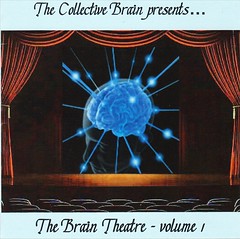Metal XOR Studio has undergone many hardware and software changes throughout the years. From primitive recording with minimal equipment to state-of-the-art digital recording, this is a brief history of how Metal XOR songs have been recorded over the last 17 years.
1. The first recording technique used introduced a lot of noise into the songs. This was the recording process: the first layer was recorded to a standard cassette tape using a regular cassette deck. This first layer was usually the drum track (sometimes with the keyboard playing along with the drums). Then the first tape would be played back on another cassette deck and an instrument would be played along with the tape in real-time and recorded to a second tape. Then the second tape, now consisting of the first two layers together, would be played and another instrument or vocals would be added in real-time and recorded to a third tape. By this third generation the first layer of music was usually real muddy and the recording itself was very noisy and muffled. So most songs did not go beyond the third layer.
2. In 1991 a 4-track recorder was purchased and multi-track recording became much cleaner and more tracks could be recorded. Using certain techniques a song could now have six to seven clean tracks. This is how the vast majority of songs were recorded in the Studio.
3. A sequencer unit was purchased to connect the synthesizer, drum machine, and sound modules together via MIDI. The sequencer would be programmed to play each instrument and when it was time to record, [play] was pressed on the sequencer and all of the instruments would play at once and the music track would be recorded to the 4-track recorder. Then the guitar(s) and vocals would be recorded.
4. The sequencer unit was replaced with a computer program called CakeWalk. Now songs were much easier to program and there were more MIDI options to take advantage of. These songs were recorded to 4-track and vocals and guitars were added on the 4-track recorder.
5. A new version of CakeWalk was used, one that could handle both MIDI and audio files. So now the instruments could be controlled via the computer and the vocals and guitars could be recorded into the computer and everything could be played back at the same time. But it was all still being recorded to the 4-track recorder.
6. A new program called Cool Edit was then used to record audio into the computer. So now all instruments and audio tracks from CakeWalk could be recorded directly in the computer as a .wav file. Now there was no need for the 4-track cassette recorder.
7. The sounds from the synthesizer and sound modules were good, but not very realistic sounding. So today a program called Reason is now being used. It has sampled sounds from various instruments for realistic sounding instruments. I also has a vast array of synthesized sounds and drums.
8. The program Audition (formerly called Cool Edit) is now used as a multi-track recorder in the computer. All instrument sounds are played using Reason and recorded into Audition. Then all guitars and vocals are recorded in Audition as separate tracks. So now the quality is all first generation and very clean and the number of tracks available is only limited by the amount of processing power the computer has.
Books could be written about each of the steps above, but this article was to provide a snapshot of the evolution of recording techniques used throughout the years.
Tuesday, September 25, 2007
Subscribe to:
Post Comments (Atom)



No comments:
Post a Comment